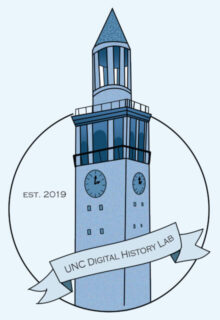By Julian Robles (Class of 2023)
Coming into college at UNC Chapel Hill, I knew that a new level of work and effort would be required to do well and succeed. I expected the usual papers from classes, assigned readings, and the few grades that counted towards the course. However, I never expected myself to complete a final project for one of my classes on Minecraft. Yes, that’s right: Minecraft. Although it may sound less academically serious, this project fit perfectly within the framework and content of RELI 235: Place, Space, and Religion.
The final project prompted students to compare and contrast architecture and their meaning of sacred space. We had a few options for our projects: we could do a presentation, write a 6-10 page paper, or propose something entirely different to the instructor, Isaiah Ellis. If your project was approved, you were cleared to let your mind go wild.
I chose to do my project in Minecraft, a “sandbox” video game where the world is made up of pixelated blocks, which the player can use to build (essentially) whatever they want. In particular, I used the game’s “Creative Mode” where the player has full access to all of the various items, blocks, and everything else the game has to offer. These blocks look different as they are made of different materials and items for building are available. Using this freedom of creativity, I used different blocks to create four styles of buildings. One building is a traditional church that you would expect in the southern United States. It’s in the neoclassical style, meaning that it’s composed of brick and includes columns. The second build is a gothic cathedral that would be typically found in Europe. The third building is a modernist take on a sports arena composed of white quartz and glass. The final structure is my personal Minecraft house that is based on my fraternity’s house at Chapel Hill. After I had my buildings ready, I created a Youtube video showcasing my buildings while explaining their significance and why they are sacred.
Having a digital landscape where I can see my thoughts and translate them into digital structures helped me build connections to the concepts of the class and express them clearly. Since I learn best through visuals and by doing things with my hands, I immediately thought of building structures in Minecraft for this assignment. Although the work was done with a screen, keyboard, and mouse, I was still putting a lot of hard work into the class. Every detail of the structures that I built was done with the class content in mind and to my liking and personal flavor. This approach to my project allowed me to engage creatively with the course material that a paper would not. I also thought that this project would be a whole lot more fun than writing a paper! Since I was using a game that I already enjoyed to do school work, I had more motivation to do my best and work hard on it.
The COVID-19 situation has disrupted the normal flow of learning and education, but my experience in RELI 235 shows that effective learning can be done remotely. Teachers must see that class can be more than a virtual call and a PowerPoint presentation. If teachers try new things that spark interest in students, then that interest will allow them to produce more creative and more thought out projects. In History courses for example, Minecraft could be used to set people in historical periods and surround them in that environment to explore. You can also use more resources like taking virtual tours of cities with rich history and give students quests to encourage exploration and learning. If I were creating an assignment for an online History course, I would allow students to recreate a scene or moment in the history that we were covering in class. I would allow them to approach the assignment in many ways—whether that be a video, a reconstruction in Minecraft, or another digital platform that is not the traditional research essay. This would allow them to conduct their own exploration of what interests them in that time period. They can have fun with it and they will hopefully find a connection with the assignment. I will associate RELI 235 with my project and that project reminds me of what I learned.
Overall, history teachers should create an interactive experience with online classes. If you allow students to seek out things on their own and build their own connections to the past, they will commit more time and energy to their courses, and take more away from them.
